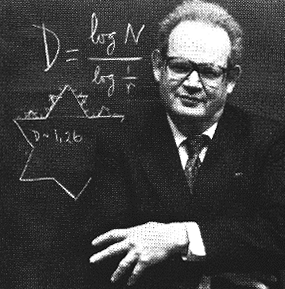[box]Benoit Mandelbrot[/box]
Benoit Mandelbrot, whose pioneering work on fractal geometry made him one of the few modern mathematicians to approach widespread fame, died October 14 at the age of 85.
Mandelbrot coined the term “fractal” in 1975 to describe irregular shapes in nature and in mathematics that exhibit self-similarity—like snowflakes or Romanesco broccoli, they look roughly the same at varying scales. The so-called Mandelbrot set, a plot of complex numbers whose boundary forms a fractal, provided perhaps the most visually entrancing embodiment of the concept.
In books such as The Fractal Geometry of Nature (1982) and The (Mis)behavior of Markets: A Fractal View of Risk, Ruin, and Reward (2004), Mandelbrot made the case that fractals could help make sense of everything from the shape of coastlines to the performance of Wall Street.
Born November 20, 1924, to a Jewish family in Warsaw, Poland, Mandelbrot moved with his family to France in 1936 to escape their homeland, which was soon to be invaded by Nazi Germany. Mandelbrot was educated in France and the U.S. and spent much of his professional life in the States, including a long stint at IBM as a staff scientist and research fellow. In 1987 he began teaching at Yale University; at the time of his death he was an emeritus professor of mathematics there.
Mandelbrot’s work on fractals brought popular acclaim, inspiring a countless number of psychedelic posters and screen savers, but it also earned him a great deal of professional respect. He was awarded honorary degrees from more than a dozen institutions and in 1987 was elected a member of the National Academy of Sciences. In 1993 Mandelbrot won the Wolf Prize in Physics, and he shared the 2003 Japan Prize with chaos theory pioneer James Yorke of the University of Maryland.
[button link=”http://www.youtube.com/watch?v=qB8m85p7GsU” color=”silver” newwindow=”yes”] Online movie – The Infinity of Colour[/button]

